プロジェクトProjects
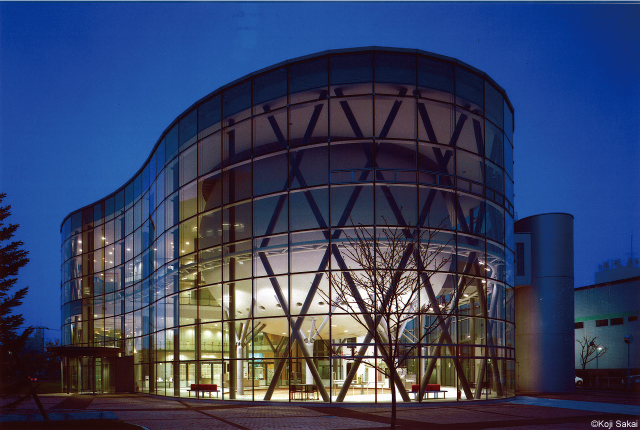
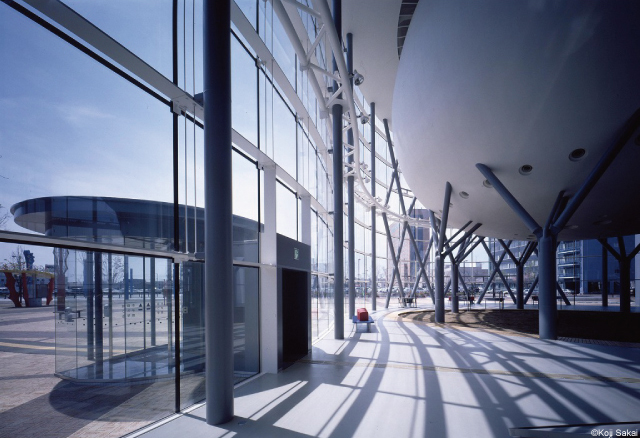
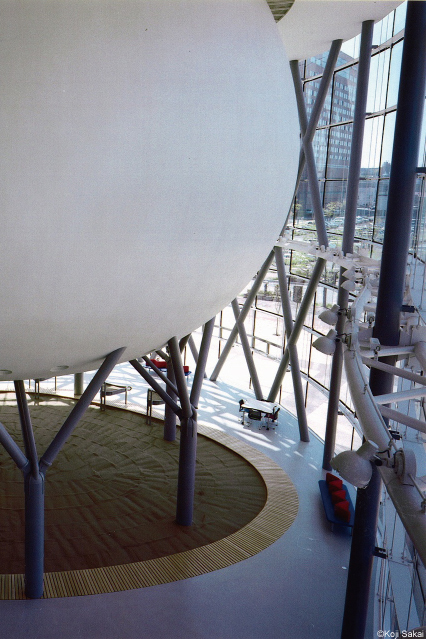
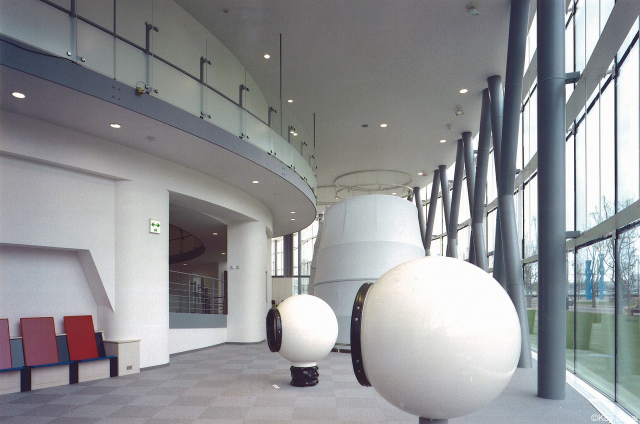
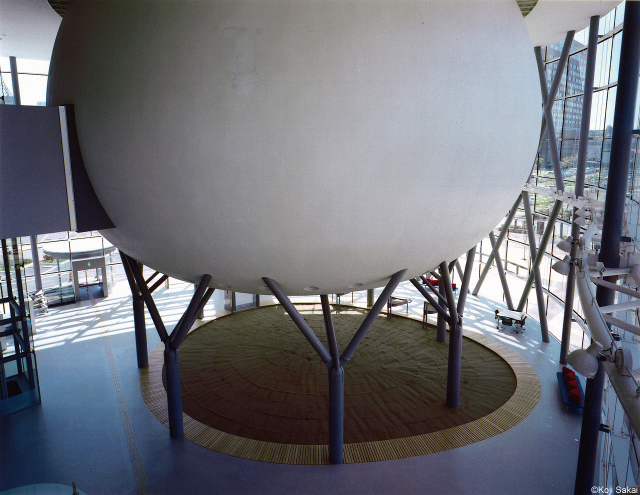
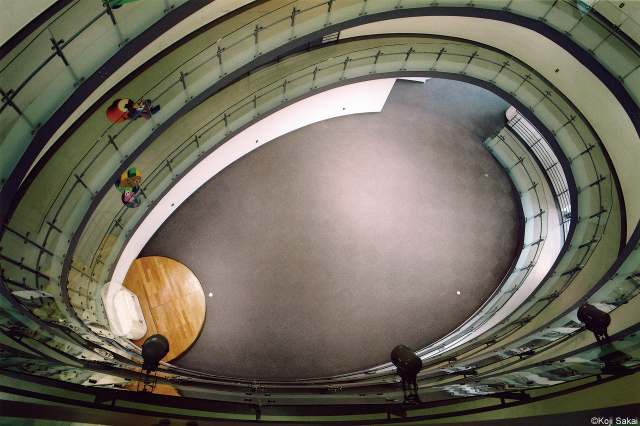
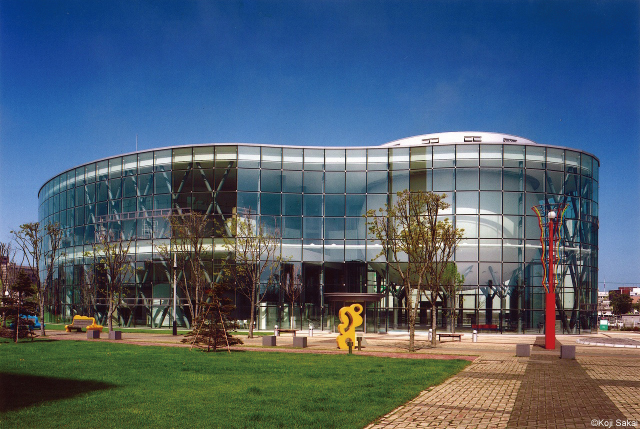
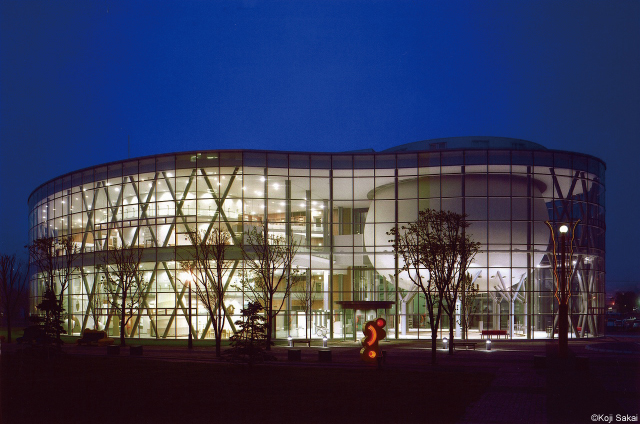
釧路市こども遊学館
2005
北海道釧路市
構 造:鉄骨造
階 数:地上5階
延床面積:5,883㎡
金箱構造設計( 構造設計 )
アトリエブンク + 総合設備計画( 設備設計、防災計画 )
あそびと学びの空間が融合した児童施設である。市民が主役となって育て上げる生命体とみなし、「完成された建物」から「生み出される場所」への転換を図った。遊学館で子供を育む多様多彩な活動を自発的かつ持続的に展開する仕組みを提案した。
ゆるやかな円弧のガラス壁面に映し出された風景は、透過・半透過・反射をくりかえし、時々刻々と変化する釧路の新しい風景を生み出していく。また、子どもの活動を全周に映し出すことで、都市に活力を与えるショーケースとしても機能する。ガラスの皮膜に包まれた空間における複数の場をスパイラルループやブリッジで結び位相幾何的な空間構成とした。区画が少なく見通しのよい一体空間を実現した。
構造計画では、外周部の柱と中心部のコアを分散配置し、アモルファスな空間を合理的に架構する構造計画とした。生物の骨格が部位に応じて変化するように、外周部の柱は負担する応力に応じ、同一断面を保ちながら直立柱からX 型柱へと変化する。
環境計画では、夏は涼しく冬は寒冷で比較的日照時間の長い北海道東部の気候特性を最大限に活かし、外周部をすべてガラスの皮膜で構成した「開放型」の温熱環境を実現した。自動制御された大規模自然換気装置と蓄熱槽を効果的に利用し、年間を通じて運用エネルギーを低減した。
公共建築協会公共建築賞優秀賞
北海道建築賞
照明普及賞優秀施設賞
日本建築学会作品選集2008
建築技術2005年5月号
近代建築2005年5月号
Kushiro Children’s Museum Kodomo Yugakukan
2005
Kushiro-shi, Hokkaido
Structure:S
Floor:5 floors
Floor Area:5,883㎡
Kanebako Structural Engineers( Structural Design )
Atelier BNK+Sogo Consultants( Mechanical & Electrical Engineering、Disaster Prevention Plan )
This children’s facility combines spaces for playing and for learning. Seeing the facility as a living organism with the public playing a major role in its development, our design attempted to shift it from a “completed building” toward a “created place” and proposed mechanisms to encourage the spontaneous and sustainable development of diverse educational activities.
The scene reflected on the surface of the gently curving glass wall is a new view of Kushiro that changes constantly as the wall alternates between transparent, semi-transparent, and reflective. Reflecting the children’s activities in its entire circumference, the building also functions as a showcase that revitalizes the urban area. The space enclosed within the glass membrane is configured as a topological space connected in multiple places by spiral loops and bridges. This achieves an integrated space with few divisions and unobstructed views.
The structural design distributes perimeter columns and a central core, giving the amorphous space a rational structure. While the perimeter columns all have the same cross-section, they vary from upright to X-shaped according to the stress they bear, in the same way that the bones of a living creature vary depending on their location in the body.
The environmental design of the building takes full advantage of the climatic characteristics of eastern Hokkaido—where summers are cool, winters are cold, and daylight hours are long—to achieve an open-type thermal environment in which the entire perimeter comprises a glass membrane. The energy required for operation of the building is reduced throughout the year by effective use of automatically-controlled, largescale natural ventilation equipment and thermal storage tanks.
Public Building Award, Excellence Prize
Hokkaido Architecture Award
Good Lighting Award, Excellence Prize
2008 Selected Architectural Designs of the Architectural Institute of Japan
Kenchiku Gijutsu May.2005
Kindai Kenchiku May.2005
